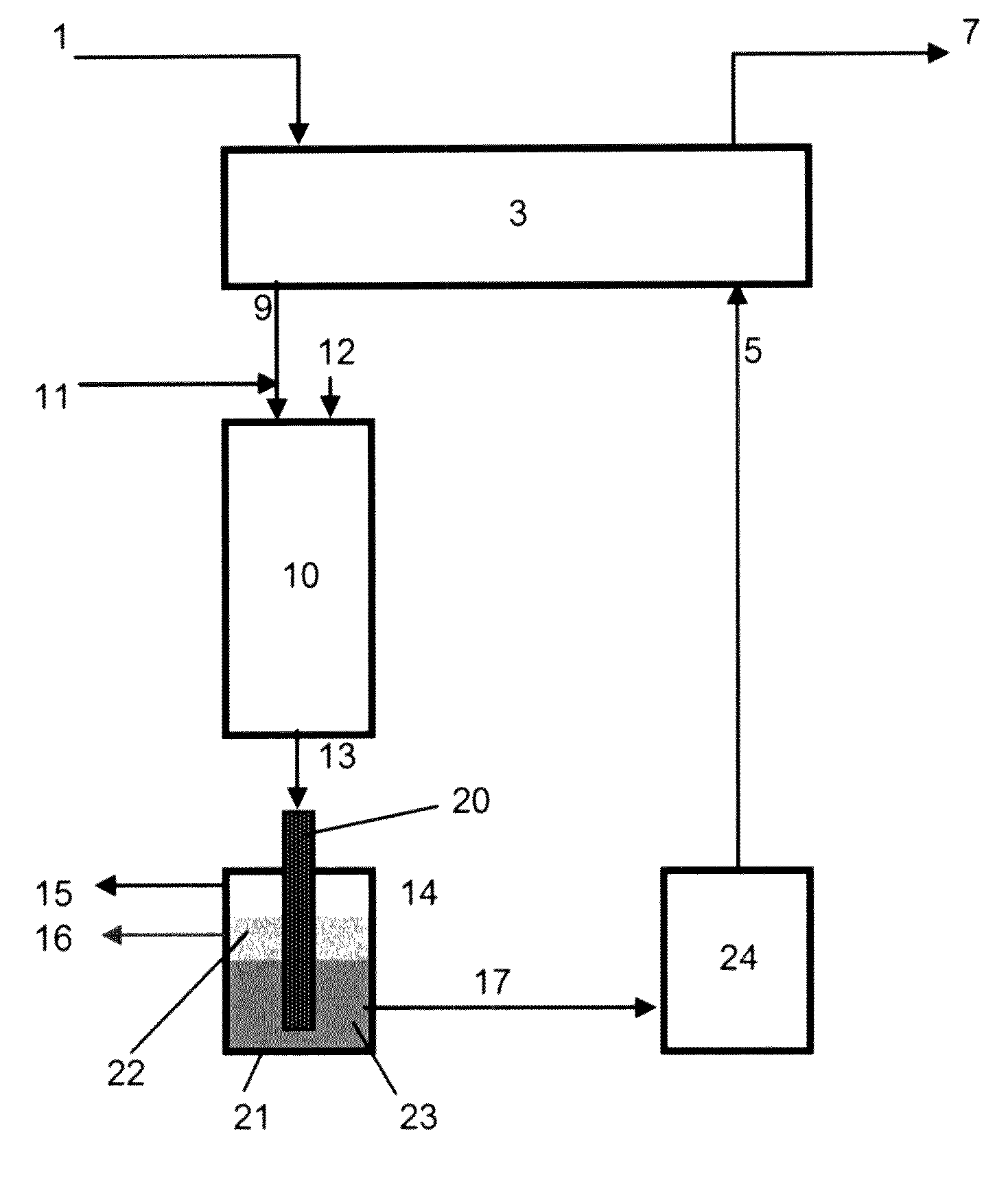Separation process
a technology of separation process and fiber-film technology, applied in the direction of solid separation, sediment separation by centrifugal force, inorganic chemistry, etc., can solve the problems of inability to recognize the capability of fiber-film technology and the use of fiber-film technology for separation, so as to save capital and operating costs and save valuable real estate.
- Summary
- Abstract
- Description
- Claims
- Application Information
AI Technical Summary
Benefits of technology
Problems solved by technology
Method used
Image
Examples
example
[0027]To demonstrate the surprising and unexpected performance of our invention, laboratory testing was performed to compare a conventional gravity settler (CGS) to the fiber film separator of our invention. A 1-inch diameter oxidizer loaded with ARI-120L solid catalyst was used to oxidize a rich caustic solution containing about 7000 ppm sulfur of ethyl mercaptide to a conversion level of 99+% at a temperature of about 125° F., 4.0 LHSV and 25 psig back pressure. Air was injected at about 300 ml / min. In separate tests kerosene was injected into the oxidizer at a rate of about 1.5 ml / min.
[0028]The effluent from the oxidizer containing about 7000 ppm DSO sulfur as diethyl disulfide was first fed into a 3-inch diameter CGS and allowed to settle via gravity. After 5 and 90 minutes of residence time, the DSO level in the caustic dropped to about 76 and 6 ppm, respectively (FIG. 2).
[0029]The CGS was then replaced with a fiber film separator, with the fibers providing an extremely large s...
PUM
| Property | Measurement | Unit |
|---|---|---|
| vol. % | aaaaa | aaaaa |
| temperature | aaaaa | aaaaa |
| temperature | aaaaa | aaaaa |
Abstract
Description
Claims
Application Information
 Login to View More
Login to View More - R&D
- Intellectual Property
- Life Sciences
- Materials
- Tech Scout
- Unparalleled Data Quality
- Higher Quality Content
- 60% Fewer Hallucinations
Browse by: Latest US Patents, China's latest patents, Technical Efficacy Thesaurus, Application Domain, Technology Topic, Popular Technical Reports.
© 2025 PatSnap. All rights reserved.Legal|Privacy policy|Modern Slavery Act Transparency Statement|Sitemap|About US| Contact US: help@patsnap.com



